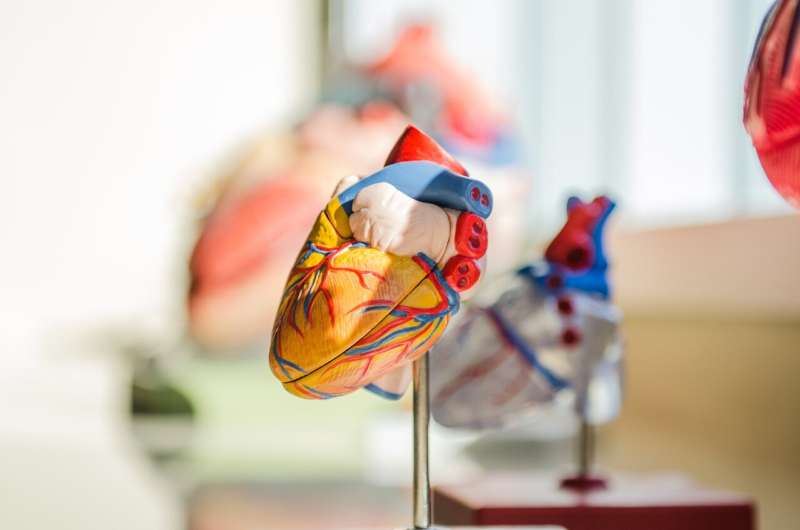Early heartbeats trigger signals that shape the heart's own development

Stephanie Baum
scientific editor

Andrew Zinin
lead editor

Researchers at the Francis Crick Institute have discovered that the heart's own contractions trigger biological signals that guide the formation of a functional beating heart.
Their study in zebrafish highlights the heart's ability to remodel and adapt to physiological demands and could also reveal what goes wrong during congenital heart conditions.
The heart is one of the first organs to form, so that it can supply a developing embryo with the oxygen and nutrients critical to grow and survive. However, how the heart transforms from a simple tube into a complex, three-dimensional pump is still not fully understood.
As part of their study, published in Developmental Cell, the research team followed the early development of the heart's muscular structures, called trabeculae, in zebrafish. Zebrafish hearts share key structural and genetic features with human hearts, but with the added advantage of transparency, making it possible to see the heart grow in minute detail in real time.
The team used live 4D imaging of the zebrafish hearts to study biological processes at different scales, from individual cell behaviors to changes in organ shape and size.
They observed that trabeculae don't grow and develop by cell division, as previously thought. Instead, neighboring cells are recruited to build trabecular complexity, thus increasing the heart's muscle mass and contractile efficiency.
Setting the right pace
The team also uncovered a feedback mechanism between heart contraction and its own development. As the trabeculae develop and the heart contracts more strongly, this initiates a mechanical signal that makes cells "softer," enabling them to stretch and increase their size. This allows the heart to expand its volume by 90% and maximize its blood filling capacity.
Crucially, this feedback system dictates a healthy pace of growth, because as heart cells stretch, they lose their ability to be recruited, thereby stabilizing trabecular growth.
Toby Andrews, postdoctoral fellow and first author of the study, said, "The heartbeat is synonymous with life, and although we've observed its structure for centuries, how it grows to the right shape and size is still mysterious. What we're uncovering is that the heart's structure isn't hardwired; instead, it intelligently adapts to changes in animal physiology. Understanding the biology behind this flexibility could form the basis of future treatments for heart disease."
The team now plans to look deeper into trabeculae development, as it transforms into an ever more complex sponge-like 3D mesh of muscular ridges. They hope to identify how trabecular ridges regulate blood flow and which cellular processes and molecular mechanisms shape these complex structures.
Rashmi Priya, head of the Crick's Organ Morphodynamics Lab, said, "Although we've made progress in understanding the molecular pathways involved in heart diseases or 'cardiomyopathies,' we still know very little about how trabeculae form and how defects in these structures affect heart function. This underscores the importance of dissecting the developmental mechanisms that sculpt these structures and give rise to one of nature's most efficient pumps鈥攖he heart."
More information: Toby Andrews et al, Mechanochemical coupling of cell shape and organ function optimizes heart size and contractile efficiency in zebrafish, Developmental Cell (2025).
Journal information: Developmental Cell
Provided by The Francis Crick Institute
















